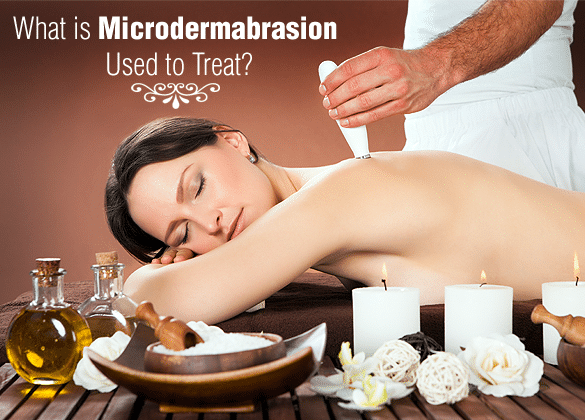Microdermabrasion is a general term used to cover treatments involving the application of tiny rough grains to buff away the surface layer of the skin. There are many products and treatments which use this method but they are all based on the same concept: tiny exfoliating crystals are sprayed on the skin with controlled pressure to cause subtle improvements without causing scarring or changes to the pigment of the skin. There are many different kinds of crystals that can be used including aluminum oxide, sodium bicarbonate, magnesium oxide, zinc oxide, and sodium chloride. The most common material is aluminum oxide.

A milder treatment option than chemical peels or dermabrasion, this procedure is easy to fit into a busy lifestyle due to its short treatment and recovery times, making it an increasingly popular choice. A non-surgical treatment, microdermabrasion does not require any anesthetics, has much less associated downtime than dermabrasion, and works on all types and pigments of skin. Unsuited to deeper skin problems such as scars, stretch marks, wrinkles, and deep acne scars microdermabrasion is best used to treat:
- Dull skin;
- Brown spots;
- Age spots;
- Black heads;
- Hyperpigmentation;
- Fine lines and winkles;
- Enlarged pores;
- Acne;
- Irregular pigmentation;
- Superficial skin blemishes;
- Clogged pores; and
- Oily or dry skin.
Microdermabrasion also stimulates the development of collagen which helps to make your skin look younger, fuller, and more elastic as well as increasing the flow of blood, carrying extra nutrients and resulting in healthier skin.
Treatments can take from 15 to 30 minutes and sessions should be spaced at least a week apart in order to allow the skin to fully recover and results to be clear before proceeding. A pre-consultation will often be required in order to assess your skin condition, discuss the number of treatments, and establish expectations. After the procedure your skin may become more sensitive to sun exposure so it is important to remember to use sunscreen whenever you are outdoors following a procedure. Side effects are limited: the treated skin may have a mild redness for 24 hours following a treatment.
Preparation consists of making sure the skin is clean, dry, and free of oils but it is important to inform the physician of any skin diseases you may have prior to treatment. Microdermabrasion should not be used on those afflicted with sunburn, rashes, herpes lesions, rosacea, open sores, dermatitis, psoriasis, eczema, or lupus. Those currently taking isotretinoin should also not undergo this procedure.
